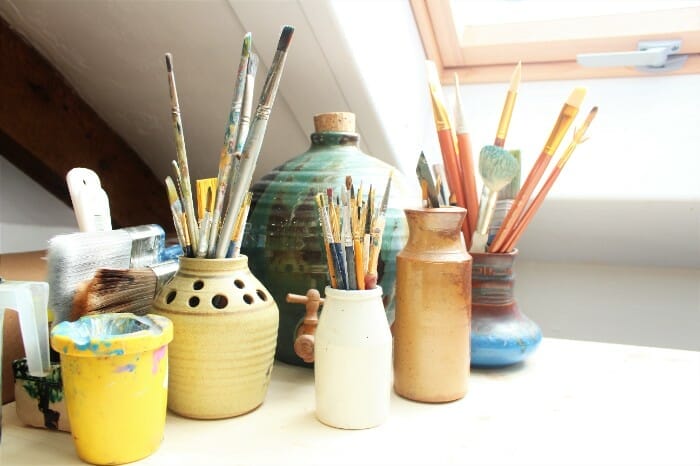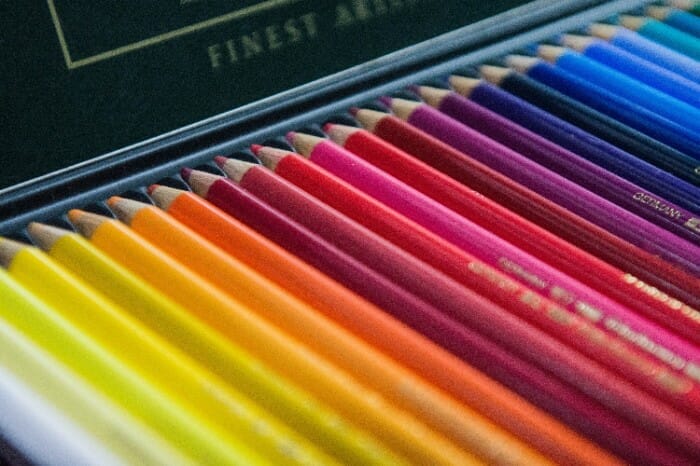How To Become A Sustainable Artist
With the world in an environmental crisis, sustainable art has become increasingly important in showing our respect and admiration…
With the world in an environmental crisis, sustainable art has become increasingly important in showing our respect and admiration for the entwining of people and the planet. Being a sustainable artist involves consciously making sustainable choices when creating art, such as selecting sustainable materials, minimizing energy consumption, minimizing waste, considering the transportation impacts of shipping work, and educating others about sustainable practices in art making.

To achieve this it’s important to do ample research before beginning any projects as sustainable options can be more costly and take more time. Here are some ways you can explore sustainable practices: purchasing items from sustainable sources like responsibly sourced wood or upcycled materials; opting for water-based paints instead of chemical-based ones; printing with plant-based inks; finding renewable energy alternatives like solar lamps, and working with reclaimed material when possible.
Similar: What Are Green Plastics?
What Defines A Sustainable Artist
It is no longer enough for creative entrepreneurs to simply be talented and inspired; sustainability also plays an important role in the success of an artist. A sustainable artist is in tune with their goals, knows how to time manage effectively, and pivots when needed.
Get Your Hand on Your Eco-Friendly Living Starter Guide!
Other attributes include having a strong online presence, connecting with key players in the industry, and knowing what resources are available and how to use them effectively. What’s more, artists should foster relationships with those who have similar visions for the future and collaborate rather than compete.

Ultimately, sustainability relies upon the ability of an artist to balance between delivering results and taking time to appreciate and enjoy the journey.
Also read: Is Glass Biodegradable?
The Effects Of Art On The Environment
From murals on city walls to sculptures in public parks, art in its myriad forms changes the way we look at and interact with our environment. The presence of art enriches both public and private landscapes, giving us access to creativity that can inform, entertain and challenge us.
The impact of art ranges from psychological effects such as reduced stress levels to social effects like increased community engagement to physical effects like improved air quality due to increased green space reclamation. Art instills a sense of identity in voyeurs as well as ownership by local residents.
It also contributes to economic development by providing jobs for creatives and through creative tourism/patronage from art connoisseurs.

Climate Activism Through Arts
Climate activism through art is becoming increasingly popular as a way to spread awareness of the harms of climate change and motivate people to take action. Many artists are creating pieces that use innovative techniques, ranging from wallpaper installations to protest music.
Climate activists who embrace art strive for creative and effective ways to engage the public in events and initiatives related to climate change. Creating art offers a powerful form of expression which has the potential to draw attention and empower both artists and activists alike.
Related: Are Coffee Filters Compostable?
Climate art serves as a promising tool to raise awareness about global warming, and inspire individuals, communities, and governments to work together to come up with solutions.
Art With Natural Materials
Art with natural materials is an inspiring and creative way to express oneself. Artistic expression can involve collecting a myriad of natural items found in the environment or creating a work of mixed media using multiple elements.
Art with natural materials often evokes emotion by bringing nature’s beauty inside, or by helping viewers to appreciate and see the world from fresh perspectives. Artistic freedom using natural items is limitless; from leaves, stones, feathers, sticks, shells, sand, and plant materials to gourds, seedpods, and more.
Fine art with natural resources is rewarding for both children and adults as it allows for unique artistic expression as well as an enhanced connection to the environment.

Popular Eco Artists
Artists are leading a global movement that utilizes art to create awareness around sustainability and the environment. Some brilliant eco-friendly artists include names like Damien Hirst, Leonardo Drew, Brain Grafton, and Sam Hamilton work with materials sourced from their local environs to craft meaningful pieces that talk about conservation and waste.
These artists are often found photographing landscapes or creating installations consisting of used materials in order to call attention to the fragility of our environment. Their artwork is a reminder to us all of the importance of respecting, protecting, and conserving our natural resources for generations to come.
Also check: Is Soy Wax Eco-Friendly Or Sustainable?
Eco-Friendly Art Exhibitions
Showcasing artwork that uses repurposed or recycled materials, or is sustainably sourced demonstrates how smaller-scale efforts still have a big impact on our environment. Environmental art often features work inspired by the natural world, taking its cues from organic forms, such as those found in science and animals, and the arrangements of the sun, moon, and stars.
These exhibitions champion creative forces who strive to reduce our collective carbon footprint while still creating beautiful works of art. These exhibitions are important in developing environmental awareness within the entertainment industry and can be an effective way for artists to express their views about sustainability practices.
The Process Of Becoming A Sustainable Artist
With so many general guidelines for becoming a sustainable artist, create your own sustainable art practice by reflecting on how your own unique artistic practice can contribute to our mission to respect planetary boundaries and honor other beings’ lives while taking actionable steps to reduce environmental impacts.
Getting Started
The process of becoming a sustainable artist requires coming up with creative and innovative ideas in order to guarantee that your art is able to stand out. Sustainable art products sustain their demand; often using recyclable or reusable materials requiring minimal energy consumption during the production process.

The key when embarking on this process is research. Researching the types of materials needed, discoverability strategies and potential market niches are all essential components of successfully building sustainable art projects. Furthermore, it’s beneficial to get advice from current successful sustainable artists for suggestions regarding how certain aspects such as mounting work, labeling artwork, and two-dimensional packaging can make a difference to retail customers.
More from us: Are Poly Mailers Eco-Friendly?
Finally, surround yourself with support from experienced mentors who are well-versed in sustainability initiatives and can help craft marketing strategies so you can effectively reach your goal of becoming a thriving sustainable artist.






